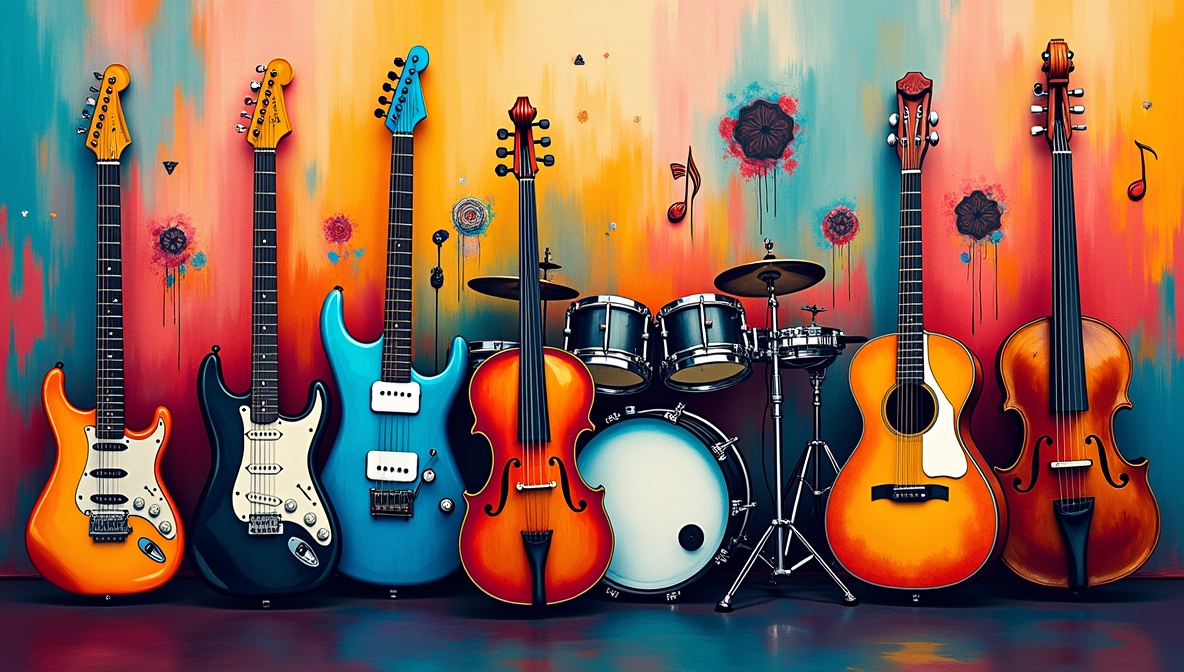The Beginner's Guide to Understanding Music Genres

Music genres are more than just labels — they’re the lens through which we organize, appreciate, and share music. They guide listeners toward sounds they love, help musicians define their style, and provide producers with a framework for crafting their sound.
In this guide, we’ll explore what genres are, why they matter, how different ones sound, and how you can dive into both popular and lesser-known styles.
1. What Are Music Genres?
- A music genre is essentially a category that groups songs and compositions based on similarities in style, instrumentation, rhythm, cultural roots, and emotional tone.
- Genres are not rigid — they often overlap and evolve — but they offer a helpful starting point when discovering new music or creating your own.
- Related Read: Beyond the Charts – Exploring Obscure Music Genres
2. Why Understanding Genres Matters
- Genres act as a roadmap for your musical journey:
- For listeners, they make it easier to discover artists with a sound they already enjoy.
- For musicians, they help in shaping identity, marketing, and creative direction.
- For DJs and producers, genres guide track selection and audience engagement.
- The more you understand the characteristics of different genres, the richer your listening experience becomes.
3. Popular Genres and How They Sound
- Let’s explore a few major genres in simple terms.
- Pop is characterized by catchy melodies, repetitive hooks, and a polished production style aimed at mainstream appeal. Rock often revolves around guitar-driven riffs, energetic drums, and powerful vocals, with styles ranging from soft ballads to heavy metal.
- Hip-Hop blends rhythmic speech (rap) with beats, often using samples and digital production. Jazz is rooted in improvisation, swing rhythms, and complex harmonies, creating a fluid, expressive sound.
- Classical music is built around structured compositions, often performed by orchestras or solo instrumentalists, while Electronic Dance Music (EDM) thrives on synth-heavy beats designed for movement and energy.
- Blues brings soulful melodies and storytelling, often built around the 12-bar chord progression, and Folk focuses on lyrical storytelling with acoustic instrumentation.
- Related Read:
- Exploring the Roots of Blues Music – From Delta to Electric
- Understanding Classical Music – Composers, Eras, and Forms
4. Hybrid and Subgenres
- Genres don’t exist in isolation. They often blend to create entirely new sounds. Pop rock fuses catchy hooks with electric guitar energy, jazz fusion mixes jazz harmonies with funk or rock rhythms, and lo-fi hip-hop combines relaxed beats with atmospheric textures.
- Streaming platforms like Spotify and Apple Music have made it easier to explore these hybrid styles through curated playlists.
5. Cultural Influence on Genres
6. How to Explore New Genres
- Start with streaming playlists designed for discovery. Spotify’s "Genre & Mood" section and Apple Music’s curated genre playlists are great entry points.
- Watch music documentaries to learn about the history and impact of specific styles — many are listed here: The Best Music Documentaries for Every Music Lover.
- Follow music blogs like Pitchfork and NME to keep up with emerging styles. You can also join online communities like Reddit’s r/ListenToThis, where users share tracks across countless genres.
7. Genres and Music Creation
Conclusion
- Genres are a tool for musical exploration, not a cage. By learning the characteristics of different styles and staying open to hybrid and lesser-known genres, you can expand your listening horizons, inspire your own music, and connect more deeply with the world of sound.
- Whether you stick to familiar favorites or branch into uncharted territory, understanding genres makes your musical journey richer and more rewarding.
